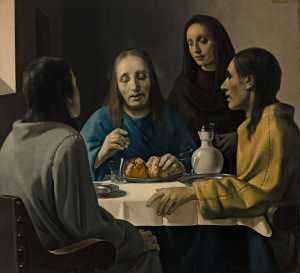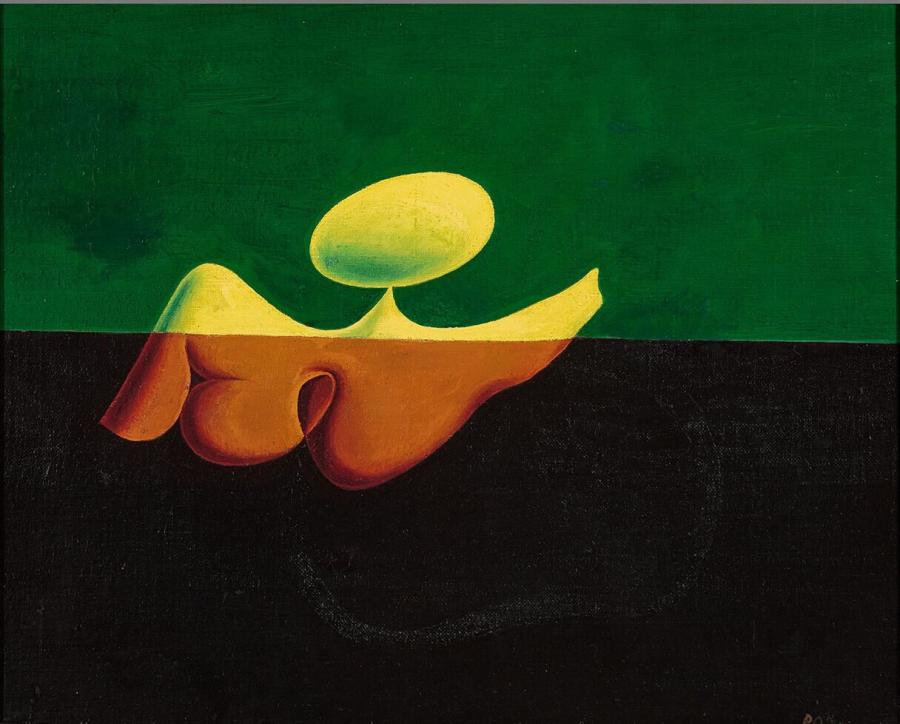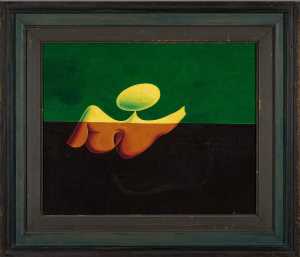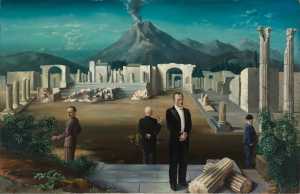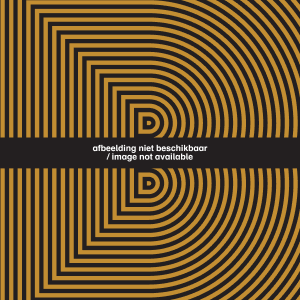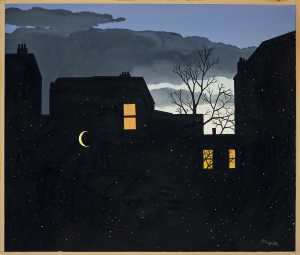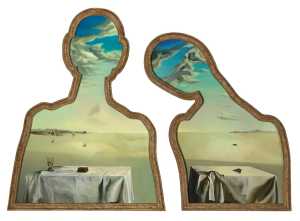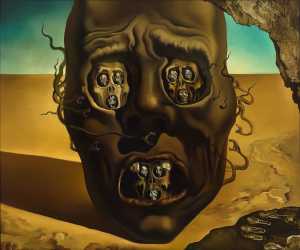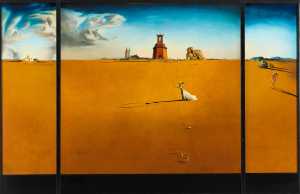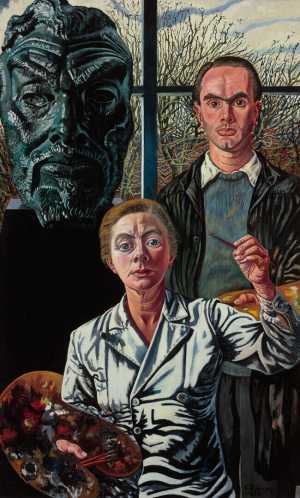In 1916 Piet Ouborg settled as a drawing teacher in what was then the Dutch East Indies. He stayed there for 22 years and made several Surrealistically tinged paintings that were not exhibited in the Netherlands until 1932. People saw nothing in his dreamy, sometimes rather child-like images. His dealer, too, thought that he was thirty years ahead of his time.

Specifications
| Title | Composition |
|---|---|
| Material and technique | Oil on canvas |
| Object type |
Painting
> Painting
> Two-dimensional object
> Art object
|
| Location | This object is in storage |
| Dimensions |
Height 36,5 cm Width 44,5 cm |
|---|---|
| Artists |
Artist:
Piet Ouborg
|
| Accession number | 3580 (MK) |
| Credits | Purchased with funds from the estate of Mrs N.C. van Riemsdijk-Borsje, 2007 |
| Department | Modern Art |
| Acquisition date | 2007 |
| Creation date | in 1931 |
| Provenance | Johannes and Cricri Tielrooy, Amsterdam; on loan from to the Dordrechts Museum 1985-2007; Christie’s Amsterdam, 4 december 2007, lot. 107 |
| Exhibitions | Haarlem 1931; Dordrecht 1993-94; Rotterdam 2017b |
| Internal exhibitions |
The Collection Enriched (2011) De collectie als tijdmachine (2017) Collectie - surrealisme (2017) |
| External exhibitions |
Only the Marvelous is Beautiful (2022) Surrealist Art - Masterpieces from Museum Boijmans Van Beuningen (2021) Dalí, Magritte, Man Ray and Surrealism. Highlights from Museum Boijmans Van Beuningen (2023) A Surreal Shock – Masterpieces from Museum Boijmans Van Beuningen (2021) A Surreal Shock. Masterpieces from Museum Boijmans Van Beuningen (2023) |
| Research |
Show research A dream collection - Surrealism in Museum Boijmans Van Beuningen |
| Literature | Enschede 1990, p. 107 |
| Material | |
| Object |
Entry catalogue A dream collection - Surrealism in Museum Boijmans Van Beuningen
Author: Marijke Peyser
From 1916 onwards Piet Ouborg lived in the Dutch East Indies to avoid compulsory military service. It was where he first became acquainted with publications about Surrealism. He also met the painters Jan Frank and Adolf Breetveld there, and in 1929 the book critic Johannes Tielrooy.[1] As a professor of French language and literature, Tielrooy was well up to date with the most recent developments in French literature and art and shared his passion with Ouborg through articles, books and magazines such as Cahiers d’Art.[2] Articles about Surrealist artists like André Masson, Joan Miró, Yves Tanguy and Max Ernst, enlivened with illustrations of their work, provided an excellent picture of what was happening in the art world in the French capital.[3]
In January 1931 Ouborg went to the Netherlands for the second time.[4] Dutch painting disappointed him. Ouborg wondered where the new life was – or if there actually was new life, because there was hardly any innovation in painting there.[5] Surrealism was not very popular in the Netherlands. By contrast the retrospective of contemporary art L’art vivant en Europe staged in Brussels in the April and May of that year made a great impression on Ouborg.[6] Here he saw actual works by Joan Miró, Giorgio de Chirico, André Masson, Jean (Hans) Arp and Salvador Dalí. We do not know if Ernst’s painting Figure anthropomorphe et fleur coquillage (1931) was exhibited in Brussels. The space suggested by the dichotomy and the horizon and the floating abstract shape are elements that are also present in Ouborg’s paintings Opengaande stilte and Compositie; both works may have been inspired by Ernst’s painting. In 1931 Ouborg also had his own exhibition of Surrealist work in the J.H. de Bois gallery in Haarlem. Compositie was one of the works exhibited.
Ouborg returned to the Netherlands in 1938 after a stay of more than twenty years in the Dutch East Indies.[7] Probably the most important reason was the health of his wife, who was finding it increasingly hard to endure the oppressive tropical climate. Ouborg’s return initially brought about few noticeable changes in his painting style. The works that had been created at the start of the Second World War are a logical continuation of the figurative work he made of temples and places of sacrifice in the colony.[8] Around 1944 Ouborg returned to the abstract idiom that he was using around 1931. However this did not mean that figuration disappeared from his work. He continued to combine figuration and abstraction, albeit that from around 1944 onwards the focus returned to abstraction.
Footnotes
[1] Enschede 1990, p. 13.
[2] Ibid., p. 17.
[3] Ibid., p. 37.
[4] His first leave was in 1923-24.
[5] Enschede 1990, p. 25: Ouborg wrote this in a letter to Johannes Tielrooy, 24 June 1931.
[6] Ibid.
[7] Ouborg worked as an art teacher and school teacher in the Dutch East Indies.
[8] Enschede 1990, p. 53: after Ouborg’s death the authority on his work, W. Jos de Gruyter, gave a rough indication of his work from the war years as 1940-45.



